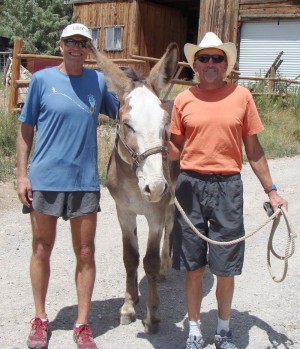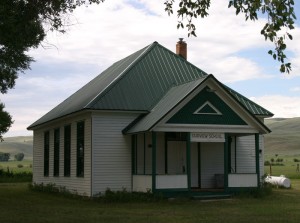Memories of the Alpine Tunnel
To the Editor:
To us, the Alpine Tunnel was always an illusionary magnet that drew our eyes and imagination to that lovely mountain. The story of the building and the courage, stamina and industry of its builders was the stuff of legends – an added attraction.
While I was growing up in Pitkin, the Alpine Tunnel was often a topic of wonder and speculation. In our Depression-weary world, the tunnel seemed the epitome of luxury and extravagance. We couldn’t imagine anyone wealthy enough to build such a costly passage through a lonely, distant mountain, or an engineer who could plan a quarter-mile-long tunnel, drilling from both sides to come within an inch of both tunnels meeting exactly. To abandon that heroic effort so soon seemed another bit of foolishness.
It was marvelous and costly. Imagine importing redwood from California to line the tunnel; rails, steel, and engines from the East; special ties, equipment, and narrow-gauge rails; plus the hundreds of workers who worked on the tunnel, the narrow mountain road bed, the buildings, turntable and palisades, and then abandoning the project within ten years.
The complications of construction at that elevation undoubtedly contributed to the ruin of the whole railroad line. The cold and the wind at that elevation made work there hard and unpleasant. The workers built a station, bunkhouse, cook shack and other buildings, and endured much. Many gave their lives to the tunnel. The story had a fairy-tale quality to it.
I was probably six years old the first time I saw the Alpine Tunnel. I had heard much about it but I was not impressed. It was just a dark, boarded-up cave in the mountain. It was surrounded by several decaying, shabby buildings high on a lonely mountain, hardly the stuff of empires and dreams.
Years later, when I was 15, my dad was hired to collect the rails in the Quartz Creek area so they could be recycled for the war effort. I had been working with my dad in the timber for nine years, so I considered myself the crew. Trucks had already picked up all the easily accessible rails found near the roads and the turntable. We started up Quartz Creek with great enthusiasm to take up the rails.
Taking up the rails was hard, punishing work. They were ten- and twelve-foot lengths of unyielding iron, and very heavy. We needed pry bars, hammers, wire and axes to pry them loose. They were very hard to handle, uncooperative on curves, and it was harder still to get them in neat piles on loading ramps by the roadside, where truckers could pick them up. There were only a limited number of rails each trucker could safely secure and haul away over rough roads. A load was considered fifteen to seventeen rails.
The rails were hard to clear for transport. They had to be pried loose from the ties, lifted, and big spikes removed with hammers, pry bars, and strong language. The weight of the unyielding rail made it difficult. If you dropped a rail on a finger or against a foot, you were hurt. We tied the rails one at a time, with wire, to the singletree. When they were skidding down the mountain the rails would swing from side to side, knocking out stumps and uprooting rocks and small trees by the path. It was dangerous to follow the rails down the hill. I found that riding the horse was the safest course. Often, the rails slid out of the wire and just sat there. We had to re-chain often, and the rails easily went off the trail and had to be retrieved.
When we finally got to the tunnel itself, it was impossible to get the rails. They were under two feet of very cold, murky water. It was inconceivable to dig them out. But, inside the tunnel it was awesomely beautiful. The water and sun made rainbows on shiny redwood walls, and the sunshine showered gold over it all. It was the reality behind that long-ago golden dream.
I think we earned a dime a rail, and had to find containers for all the spikes. We did not acquire great wealth and I learned that my simplistic idea of rolling rails down a mountainside did not work! The mountains stayed beautiful and unmovable. The Alpine Tunnel retained its rails, which probably are now buried under the collapsed walls. It was a memorable time of toil, heat, dust, and fatigue surrounded by those timeless mountains.
Adelina Taylor
Buena Vista, CO



